Game 150: A Week in the Life of an Officiating Crew. Part I: The Ref

Note from The MMQB’s editor-in-chief, Peter King:
In November 2013 The MMQB was granted unprecedented access to an NFL officiating crew during the week of the a Ravens-Bears game in Chicago. My video partner, John DePetro, and I were able to go where the officials went; we focused on four members of the seven-man crew in the week leading up to the game and then covered the officials’ Saturday rules meeting at a Chicago airport hotel, their group dinner that night, their pre- and post-game locker-room rituals and a breakdown of their game at Soldier Field.
NFL officials customarily are not allowed to speak to the media other than to a pool reporter after a controversial call in a game. We believe this is the first time that the third team on the field each Sunday, the officiating crew, has been profiled to such an extent and in such depth, with the officials allowed to speak freely about their jobs on the field and their lives off it, and the pressures that come with their responsibilities.
Why “Game 150?” The NFL numbers each of its 256 regular-season games, and at the top of each piece of paperwork that the crew members complete after a game is a spot for the number. Baltimore-Chicago was Game 150.
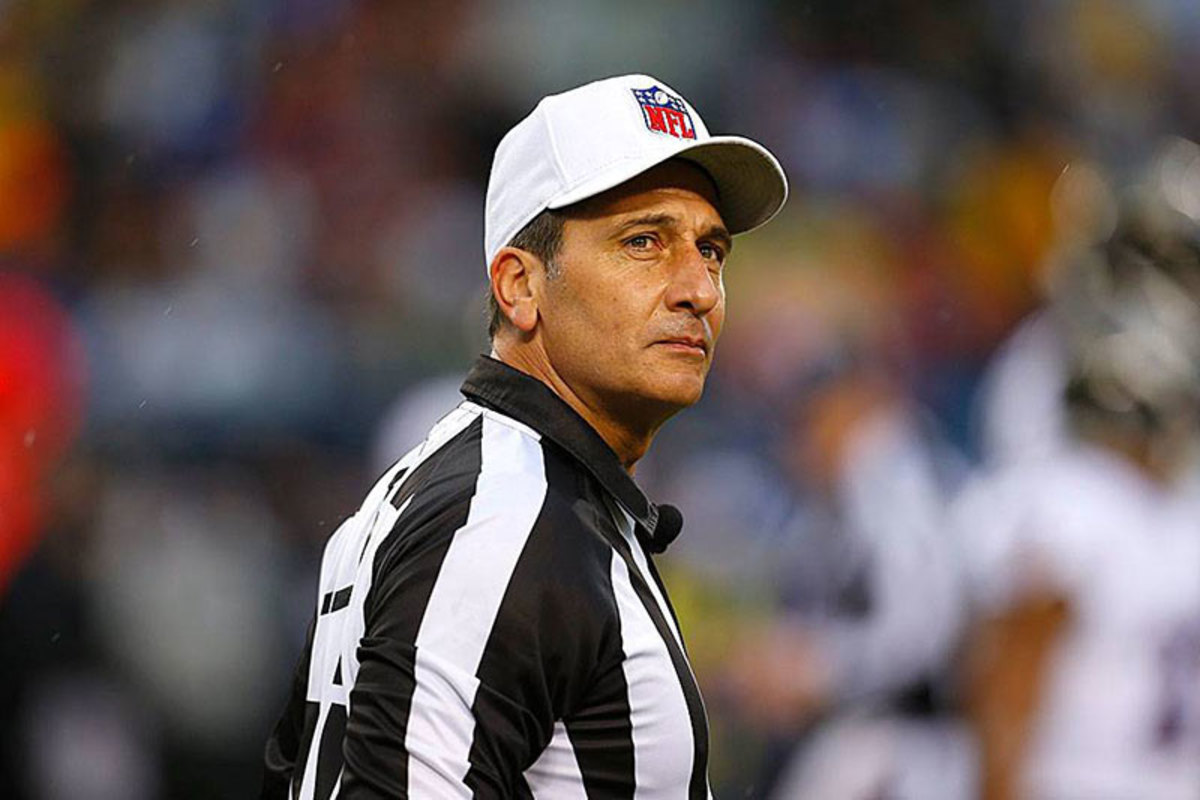
The series will be presented in three parts:
Part 1: The Referee
Part 2: The Crew
Part 3: The Test—Saturday Preparations and Game 150
Monday, Nov. 11., Washington, Pa.
You get the address and rough directions to National Football League referee Gene Steratore’s house 45 minutes south of Pittsburgh, and you drive past what looks to be the place. Blank mailbox. No number. Keep driving. You turn around a quarter-mile down the road and go back, stop, and look up again. You think this looks like the place, so you go up to the door, and there he is: referee 114. Gene Steratore welcomes you in with a big smile. He’s cooking angel hair and fresh vegetables in the kitchen.
But the address …
“I don’t put the address on the mailbox,” he says. “I don’t need people to know where I live.”
Three years ago, after a controversial call at the end of a Dolphins-Steelers game, news crews showed up at his local janitorial supply business. A caller to the business told Steratore, “I hope you die of AIDS.” Thus Steratore’s reluctance about his address.
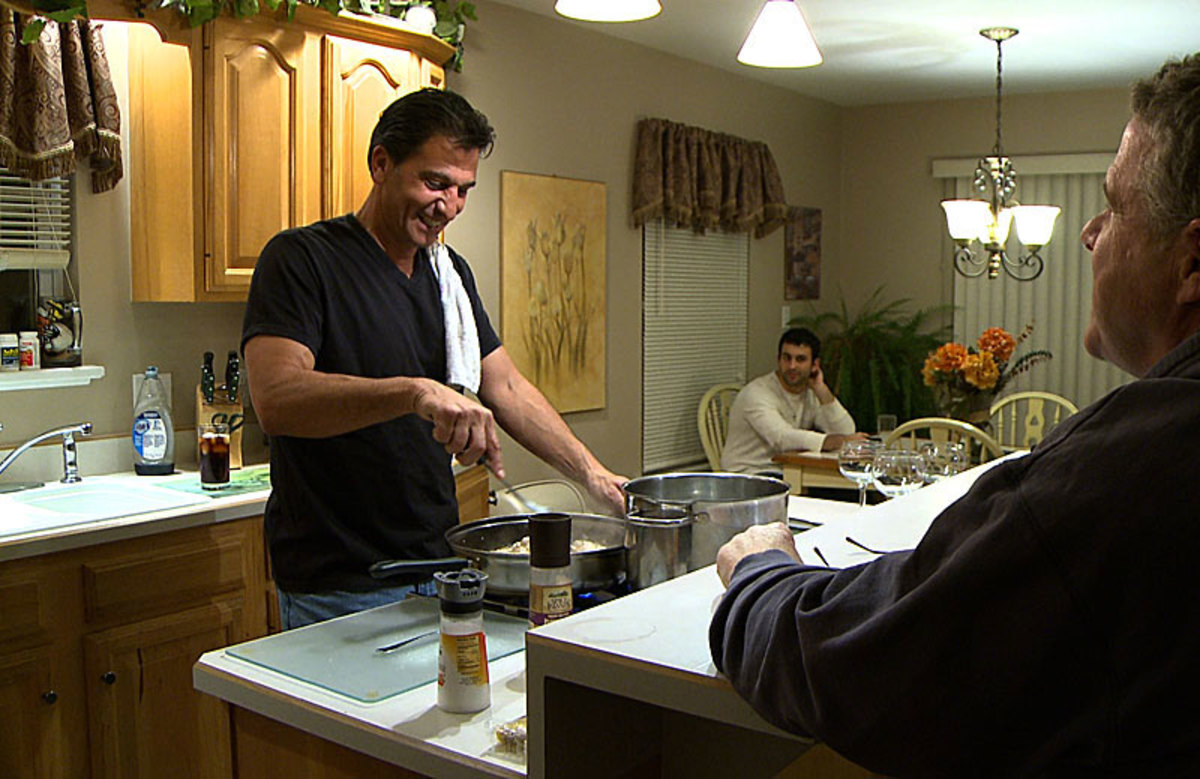
Steratore is 50 and divorced. This is his 11th season as an NFL official and his eighth as a referee—the head of a crew. He is engaged to be married for a second time, to a local college math professor, Lisa Mauro, and you can tell how smitten he is; before games, so as not to confuse the official balls with others that might be found on the sidelines, his crew marks all 24 with the initial “L” (for Lisa) with a silver Sharpie, just below the NFL shield. Steratore has three grown children from his first marriage and lives with his son Gene II, who is 24. Steratore the dad has some officiating confidants, including his brother Tony (a veteran NFL back judge), former ref Jerry Markbreit, and the six men on his crew. But Geno, as dad calls son, is a stickler about the rules, and he’s not afraid to tell his father when he messes up.
The NFL likes Gene Steratore. You can tell by the assignments: He’s reffed the last three Peyton Manning-Tom Brady games. He’s self-assured, confident making the calls and even more confident when the microphone is turned on and he has to explain the penalty to America. His folksy Pittsburgh accent helps. When I told one NFL coach I was doing this story, he said, “I like Steratore. He’s the kind of guy I’d like to have a glass of wine with someday.”
That couldn’t happen on game weekends; the NFL’s 119 officials cannot drink alcohol on the day before a game, and even a beer after the game is frowned upon. Tonight Steratore steers clear of the bottle of Da Vinci Chianti on the table and drinks a cola with dinner. He’s got tape to watch, which he does either on the big-screen TV in his living room or in his office across the hall from the living room, on his laptop or the league-issued Surface tablet. By Tuesday, Steratore will be active on Ref 360, the secure NFL program accessible only to the league officiating department and the 119 officials that logs all grades, appeals and final league marks for each crew each week. And, by 7 a.m. Tuesday, when the hard drive with the week’s plays from every TV and coaches video angle shows up by FedEx at his front door, Steratore can watch any play from any game except the Monday-nighter at the click of a mouse.
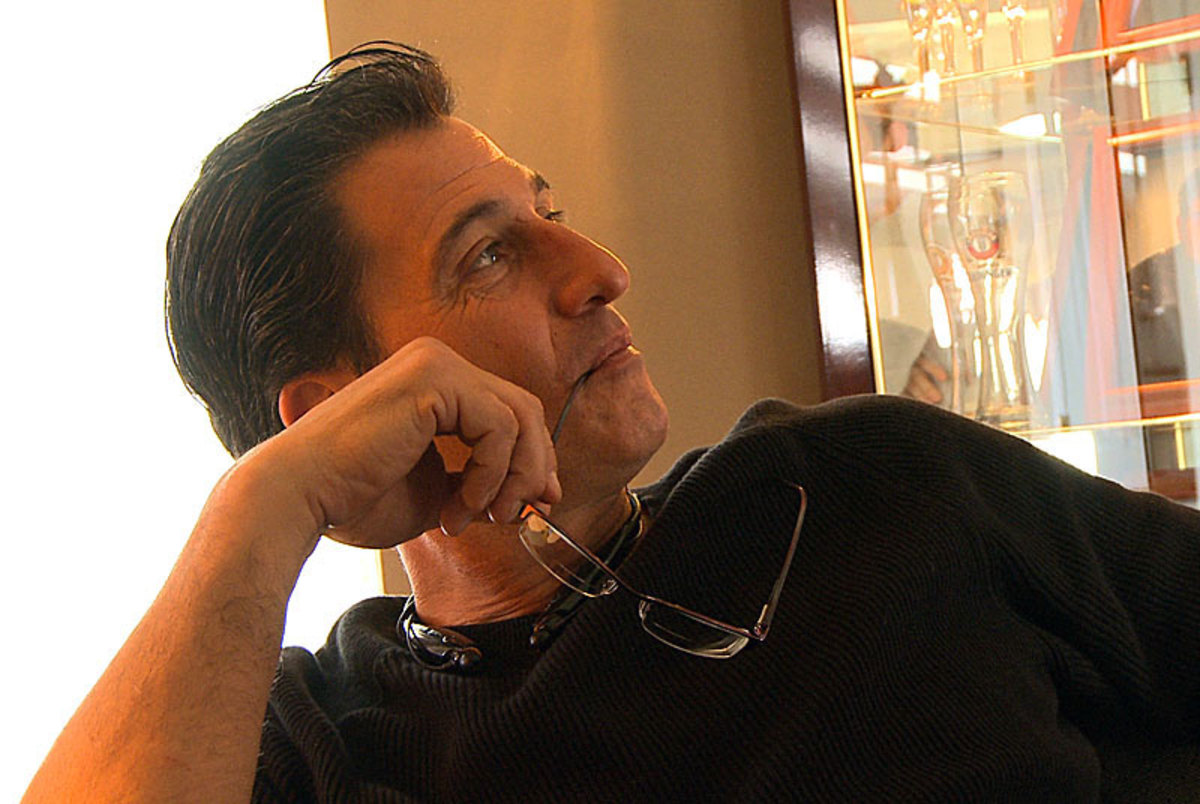
Tuesdays are nervy times for the officials. “Our moment of truth,” Steratore says. That’s when the preliminary grades from the games just officiated are emailed to every official, usually by 2 p.m. Eastern Time. The NFL employs a crew of officiating supervisors, usually former officials, to pass judgment on the current guys. In this case former umpire Ed Coukart is the supervisor assigned to the Texans-Cardinals game Steratore’s crew had worked the previous day, and Coukart spends Monday going over each official’s performance on every play. The grades can be appealed by the crew chief, and supervisors conference with league bosses Wednesday to review the grades before they become final late that day.
Steratore red-eyed back from Phoenix last night after the Houston-Arizona game. That turned out to be a rough one for the crew and will be a big part of this week. Steratore already watched the video of the game once, mostly on the way home, using one of the thumb drives that each official receives before he leaves the stadium, containing an instant copy of the TV broadcast. But Steratore will watch more tonight. He found a couple of plays troubling and knows they’re being reviewed by Coukart at his home in Ohio today.
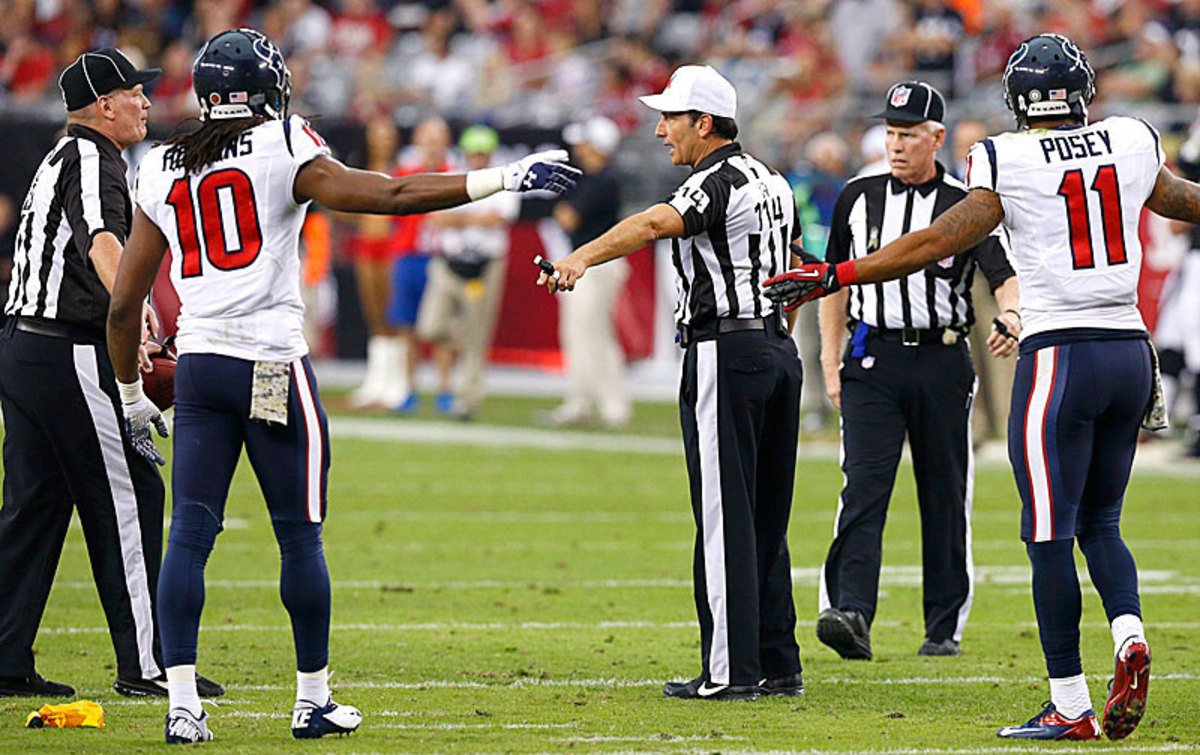
Troubling might be the wrong word. Agonizing is more apt. As he reviewed the game over the course of several hours Steratore ran one questionable non-call back and forth for 15 minutes; I’d guess he looked at it 30 times, from every angle. “This is so close!” he says on the 20th look or so. You soon realize that playoff and Super Bowl assignments hang on interpretations of plays like this, running over and over on Eddie Coukart’s home tape machine on Monday and then in the NFL Officiating Command Center at 345 Park Avenue every Wednesday. Other plays from the Texans-Cardinals would be similarly microscoped. But let’s take this one first.
As Steratore turns on his TV in the living room and fast-forwards the CBS broadcast to the Texans-Cards play he’s talking about, he says: “This business is a tinderbox. You’re walking on a cliff on every play. I want to make sure we get the fouls everyone sees. My belief is you go fishing for whales in this business. Don’t go fishing for minnows.”
On this night we’ll walk the edge of that cliff, video-wise, on two plays in-depth. The first: Ageless Arizona pass-rusher John Abraham steams around Houston right tackle Derek Newton, taking the long way to quarterback Case Keenum. As he turns the corner and heads toward Keenum, Abraham has his jersey grabbed for two-tenths of a second, maybe. You barely notice the restriction at first glance–it’s like the skip of a record or a quick stutter in a speech. If you watch it enough times, you see Abraham being held up for an instant. No more.
Steratore keeps running it back and forth. The TV announcers, Kevin Harlan and Solomon Wilcots, didn’t notice the tug. On the field, Steratore didn’t call it. “There’s the tug,” Steratore says. “He’s two yards from the quarterback. Could he have gotten there … if the quarterback is in his throwing motion when that occurs? Do you call that? Is it big enough?”
I don’t answer for a while. We watch it 10 or 12 more times, normal speed and slow-motion, and finally I say, “I wouldn’t call that.”
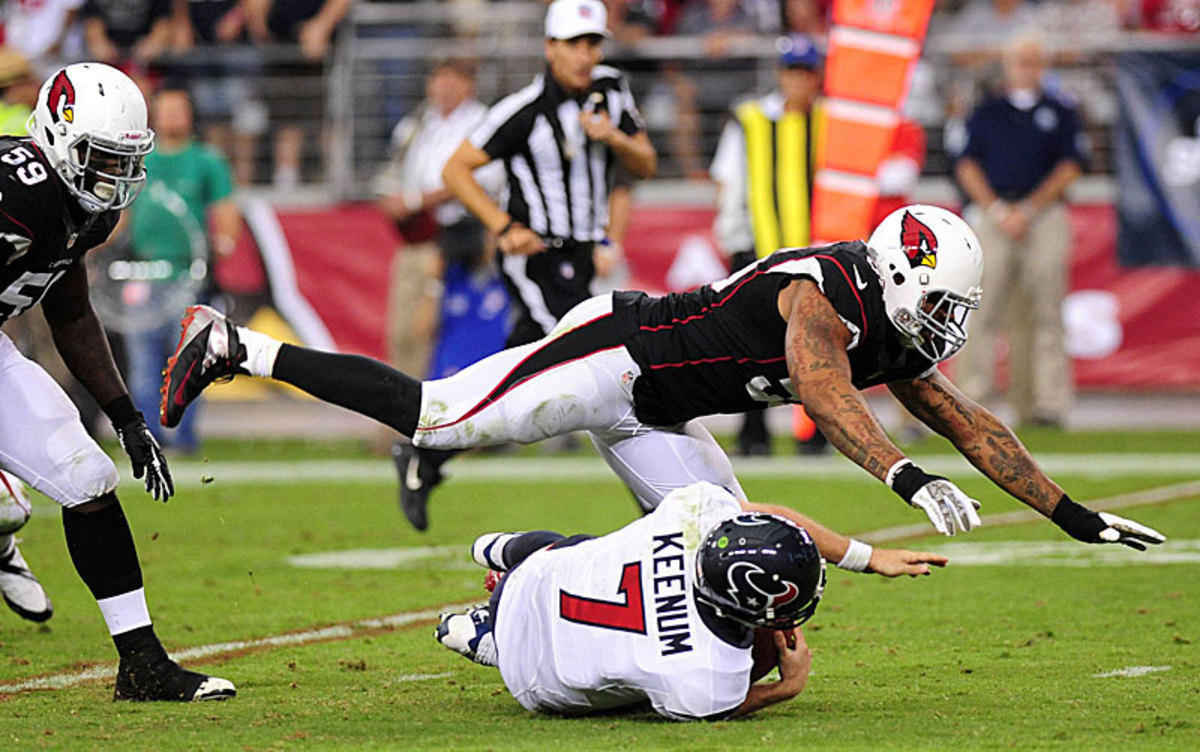
“Okay,” Steratore says. “We just watched that for what? Ten or 15 minutes? For the part of the play that takes maybe 1.3 seconds? And you see something, but you’re not sure how much it is. I didn’t call it because I felt like it wasn’t enough of a restriction. But understand, when it’s reviewed by the supervisor or the guys at the league, that there’s a chance that’s enough and that’s a miss. That’s how finely tuned we are. Then understand that five of those happen throughout the course of 15 weeks we work, and your chances of working an AFC or NFC Championship, or the big game, are gone. On maybe five of those plays in an entire year. That’s how tightly scrutinized this business is.
“And all for the right reasons; don’t get me wrong. That is not a complaint. One of the things I’m loving about [rookie VP of Officiating] Dean Blandino is his attitude of, ‘Guys, let’s stop officiating for the grades. Don’t worry if it’s a coin-flip play and you were downgraded. Let’s dissect it, and let’s learn from it.’ ”
Easier said than done. Steratore has never refereed a Super Bowl, and he very much wants to. With Game 150 on the horizon, he has started to think this could be his year. In the first nine weeks of the season he’s had only two downgrades, officiating parlance for incorrect calls. This game worries him, but he’s trying to be a good officiating soldier and follow Blandino’s mantra: Officiate the game. Don’t officiate for grades. “I said that every year too,” says Mike Pereira, the league’s officiating czar from 2001 through 2009. “But it’s tough. As an official the grades weigh on you like a sledgehammer.”
Now Steratore advances to the sixth play of the fourth quarter of Houston-Arizona. Is this play worthy of a UNR call? That’s officiating shorthand for “unnecessary roughness.” (Every foul has a three-letter abbreviation that officials use.) The situation: Arizona up 20-17. Houston ball, third-and-three at its 42. At the snap, Keenum is flushed backward, and three pass-rushers chase him: Frostee Rucker, Abraham, and Marcus Benard. Rucker dives at Keenum, who sprawls away, and then Abraham lunges at the falling Keenum (it’s not apparent that Abraham touched him), and with Keenum on the ground, Benard dives on the quarterback. No flag from Steratore.
“So,” Steratore says, “is that a late hit? He’s now down at the 16-yard line, they’re punting, they’re down 3. They just brought the house on him, he rolled away, he loses his balance. All this is going through my mind in real time.”
He rewinds.
“Does 55 [Abraham] touch him? Okay, let me ask you this, then: Does the other player who hits Keenum [Benard] know that 55 touches him? And here’s how I officiate the play. At what point does the defensive player commit to the tackle and where is the quarterback in relation to that defender when he commits to the hit? So [Abraham] goes over, misses with his hand … “
He rewinds.
“Is that the right call for the game to give Houston a new set of downs? And is that unfair for me to think that way? Is that egregious enough, is there bad-intent enough, in a fevered pitch, to give this team, after a 22-yard loss [actually 23], a new set of downs on a play that if we run this back, technically, there’s a foul? If we run this back, frame by frame by frame, you’re going to tell me the hit’s a second late. But is this unnecessary roughness, which is what it is by description? And do you read that much into it as an official? Do I officiate this play for the grade? Do I officiate this play for the game? I mean, what do you do for that play? Or do you not think of any of that?”
He rewinds.
“I call nothing. This other defender, 59, had no idea that 55 touched him. And I don’t believe that this defensive player [Benard] had any bad intent on the hit. I don’t think he tried to punish this quarterback. I don’t think that he unnecessarily roughed him. I think it’s on the border and in the split second of time did not think this was a foul that warranted a UNR.”
He rewinds.
“Now Keenum looks at me, like, ‘What the hell?’ I shook him off. I said, ‘No, no. This is a man’s game and you fell and got hit.’ ”
Coukart has looked at the same potential UNR over and over. In 12 hours, via email and then Ref 360, Steratore will find out what Coukart thinks of these two plays. There are other close plays in this game too. “Our toughest game of the year,” Steratore says. And before he can think about Game 150, Steratore and his crew have to close the book on Game 144.
Tuesday, Nov. 12, Washington, Pa.
Steratore has three other part-time jobs. He and his brother Tony run the janitorial supply business, which is not a major concern during the season. He also assigns and grades officials for Division II and III football games in the western Pennsylvania area. And he is an NCAA basketball official. By 11:30 this morning he’ll be on the road, driving four-and-a-half hours for a game tonight between South Carolina State and Michigan in Ann Arbor.
This morning, he spends a couple of hours in his janitorial supply office. He comes home, packs a light bag with his basketball official’s uniform. He reviews a few more plays he knows will be under the NFL microscope.
At 10:58 a.m., Coukart’s email pops into his inbox. It directs him to check his Ref 360 for the preliminary grades.
“Let’s see what the boss says,” Steratore says, and he fires up Ref 360 with its coded play numbers and explanations from Coukart.
Steratore is transfixed and begins reading off the report from Coukart, with some commentary: “Play 229, no call for a trip. My umpire [Bill Schuster] has a no-call there. TRP … Incorrect call OPI [offensive pass interference]. Dino [Paganelli, the back judge] came down and tried to talk Jeff [Seeman, the line judge] out of making that call. Jeff stayed with it. Coukart went incorrect … Roughing the passer—they want me to call RPS here. I want to look at that one … Correct, correct, correct, correct, correct, correct, correct … Now, oh, the play we watched last night, the hit on Keenum—they want that to be unnecessary roughness.”
The only good news of the morning—Coukart agreed that the slight tug on Abraham’s jersey was not a foul—was an asterisk and only that. After Steratore finishes with Ref 360, the air is out of the room.
“Two calls,” Steratore says, trying to sound brave. “How about that? [After] two calls in 10 weeks. This doubled my calls in one week. I went from two to potentially four.”
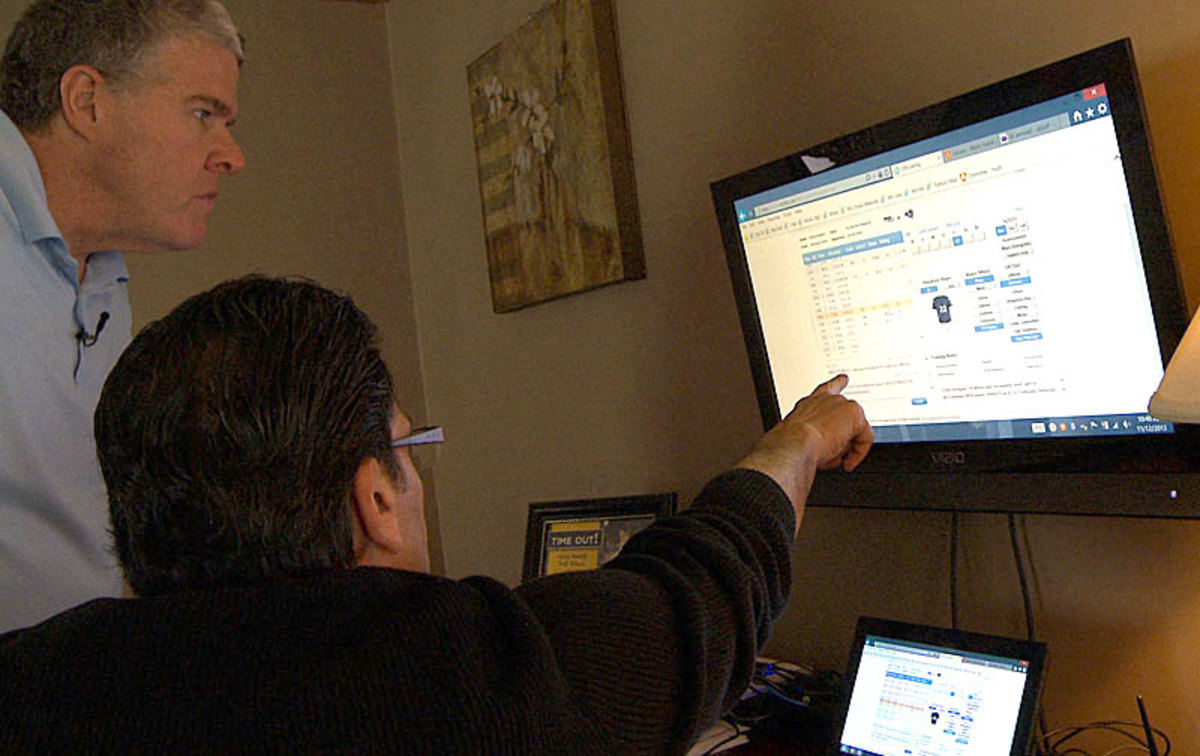
The first play was an odd one, and unexpected. But after watching it 10 times with his son, Steratore gets the point—even if he disagrees with it. On an incompletion from Keenum to Andre Johnson, the Cards howled for intentional grounding, because Johnson had stopped running and Keenum threw the ball far away from him, with no one around. That’s where the attention was. Meanwhile, Keenum was getting spun around by one Card rusher and speared with the crown of the helmet by defensive end Matt Shaughnessy. Two of the crew rushed to Steratore to talk about grounding. As for the hit on Keenum, Steratore saw the contact but felt the crown-of-the-helmet blow was lessened by Keenum’s getting yanked away by the other pass-rusher.
And now, as he ran it again and again, it looks like Keenum would have been yanked to the ground without the Shaughnessy head-butt. No matter, though. The combo platter of the crown-of-the-helmet hit and hitting him flush when the ball was away was enough for Coukart.
“Boy,” Steratore says to his son, “that doesn’t look like a foul to me, Geno. But he wants the lowering of the helmet.”
The two Steratores look hard at the little screen. The play, ending with Shaughnessy’s helmet planted in Keenum’s sternum, runs again.
“You think it is [a foul], don’t you?” Gene Steratore says to his son.
“I don’t think it’s a foul,” Geno says, “but I think because he’s lowered then kind of sandwiched him, you’re never going to win [an appeal]. That’s going to stick.”
In today’s football referees know quarterback protection is paramount. That’s why Steratore, though he talks with great hope that maybe he can get one of the downgrades overturned on appeal, figures he’s just blown his shot at reffing Super Bowl XLVIII.
“Now I’d have to finish the year without a miss. Good luck. That’s Baltimore-Chicago, Denver-New England, Lions and Packers for the next three weeks.”
It’s quiet in the house as Steratore scurries to leave for Ann Arbor. At one point he looks up and says, “There goes the Super Bowl.” He might be right: There are 17 referees competing to be the best, as there are at each spot on the officiating field. Position by position, officials are ranked in three tiers based on their regular-season accuracy rating. Only officials in Tier 1 are eligible to work the Super Bowl; there is no minimum or maximum number of officials who can be in Tier 1, but according to Blandino there are usually between four and six.
If there are, say, four officials who qualify for Tier 1, it is not necessarily the official with the best accuracy percentage who gets the Super Bowl. Other factors—positioning, mechanics, rules expertise and decisiveness—weigh into the NFL’s decision. Last year Steratore’s back judge, Paganelli, had a rare no-downgrade season and got the call. That’s what they all aim for. There isn’t a set cut-off percentage separating the tiers because every position could have different degrees of proficiency. If five referees are at 98.0 percent or better, and the sixth is at 97.25 percent, the logical line of demarcation would be between the fifth and sixth referee that season.
There is no way for Steratore to know if he’s blown his shot or not. Four downgrades would almost certainly not be enough to knock him out of contention for the Super Bowl, but it would probably reduce his margin for error down the stretch of a tough season.
Tier 1 officials are eligible to work all postseason games. Tier 2 officials can work Wild Card and Divisional playoff games. Tier 3 officials, Blandino says, are not playoff-eligible and would be subject to a thorough offseason review and possible replacement by the league.
There’s some professional mourning here, because now Steratore thinks he’s killed his season. But as the crew chief, he has a lot more to worry about. He cannot sulk; at least none of the men on his crew can see him or hear him complaining over his evaluation, particularly when, as the representative of the league to his crew, he has to support Blandino’s credo of reffing for a great game, not for great grades. It’s notable that after 10 or 15 minutes in the house with the unmarked mailbox, obsessing over the two downgrades, Steratore begins thinking about his team. The crew had a season-high six downgrades in the Houston-Arizona game. He’ll have to tend to one bit of potential tension—Seeman and Paganelli seeing the the pass-interference call differently, and the grader agreeing with Paganelli, causing a downgrade. Steratore will hold a conference call with his six officials tonight at 9:45, and no one’s going to want to hear him whining over two downgrades that might cost him a chance at glory.
What fans might not realize (and in fact I never understood before being embedded with this crew) is that what happened last week affects how an official officiates next week. NFL officiating is a continuing education class. The fact that Steratore has been downgraded twice for hits on the quarterback will carry into Game 150, and it will affect how Steratore views hits on quarterbacks Joe Flacco and Josh McCown in Chicago. Not just because of the two downgrades—because he and the 16 other NFL referees have their antennae raised on hits to the quarterback.
On I-76 near Youngstown, Ohio
Steratore got into this business because his dad was into it. His father reffed college football and basketball, and many was the weekend when the Steratore family would pile into the car and drive from western Pennsylvania to a football game at Harvard or Princeton. “I found myself watching the officials more than the players,” Gene Steratore says.

Driving over a road he knows like a long-haul trucker (he prefers driving to flying because he can set his own schedule), he considers my question about whether officials today are being asked to do the impossible in making the right calls on helmet-to-helmet hits and blows to defenseless receivers. I suggest the game’s just too fast. He thinks for a few seconds. “It’s becoming more challenging,” he says. “It requires precision at a very, very, very technical level to be ruled on correctly. We’re not asked to do the impossible, but we are being challenged to digest new ways of looking at certain things. The more you see in real time, the slower the play will start to happen in your mind, and the better you will digest it.”
His phone rings. Jerry Markbreit.
“Jerry,” Steratore says into his headset. “I want you to look at a couple of plays for me. You have time?”
Markbreit, a veteran of four Super Bowls (no man has refereed more) and eight conference title games, is 78 now. He says he’ll look at the plays and get back to Steratore. A generation ago, when Steratore was climbing the officiating ladder, Markbreit was his idol. “To have Jerry as a resource—for everything—is such a thrill, and so valuable,” Steratore says. “It’s amazing to me that I can pick up the phone and call Jerry Markbreit for advice.” How to deal with crew issues, when to fight a downgrade and when not to, all things officiating—that’s why Markbreit is so important to Steratore.
I rattle off some questions.
Q: Is it tough to put a downgrade behind you?
Steratore: “We don’t just slough it off. Unfortunately, we don’t get to play 180 games like a shortstop does. You have to observe it and look at it from an officiating standpoint rather than a grade. And you try and relive in your mind what you saw on the field. You dissect the play the way you should with or without the grade. I missed this. Why did I miss it? Was I not in the correct position? Did I not think it was severe enough to warrant a foul? Then hopefully use all of that to do what you ultimately want to do: get better and learn from it.”
Q: How about when you disagree with the grader?
Steratore: “There are gray areas, some a little more gray than others. If a play is missed, then you acknowledge the fact that you missed the play. When you have a different viewpoint, you present it professionally and openly and hope that it’s received that way.”
Q: Biggest misconception about officials?
Steratore: “That these guys just show up on Sunday, put their ball caps on, and they can’t get anything right after the play has been shown 10 times in super-slow-motion. The amount of time officials put into their craft and into their job and into their profession is vastly underrated, and the efficiency in our business is well over 97 percent. If you look at any job, and had an employee that was over 97, 98 percent in everything that he did, he would be one of your most highly valued employees in whatever company you work. In our business … you are recognized for the 2 percent wrong.”
Q: Is that fair?
Steratore: “It is fair in the sense that you are paid to get 100 percent of them right. When you make that mistake that potentially costs a team that worked thousands of hours to prepare for that play, and it was done correctly and ruled incorrectly, then you deserve to be recognized for your inefficiency. It’s part of the business.”
Q: How’d you get good at the microphone part of the job?
Steratore: “You just communicate. Don’t make it a big deal. Be confident … Funny story. Week three, preseason, my first year as a ref, 2006. Chicago. First two weeks of preseason I had replays in each game. Both were, ‘The ruling on the field stands.’ In Chicago we ruled interception. I go to replay and it’s not an interception. And I think I have this down pat. Calm and relaxed, I come out. And now I’m standing on the field. I click the mike, in the middle of Soldier Field, and said, ‘After reviewing the play, the ruling is … ’ And I just flat-lined. I blanked. Dead silence for what felt like eternity. And I said, ‘The ruling is … It’s not good.’ My crew, they killed me the whole game.”
It’s 4 in the afternoon. We’re in Toledo now. Steratore is about to drop me off and go on to the basketball game. I’m meeting the field judge on Steratore’s crew, Bob Waggoner. His other job is assistant supervisor of officials for the Big Ten and the Mid-American Conference, and tonight there’s a MAC game at the Glass Bowl in Toledo: Buffalo at Toledo. Waggoner will analyze the crew and, he hopes, help them continue to climb the officiating ladder.
Just before our highway exit, I ask Steratore about being invisible.

“If you’re in this for recognition, you picked the wrong second job or first job or hobby,” he says. “We are a necessary part of the game. We’re not a necessary evil of the game. We have a role to play, and our role is truly to not be recognized. How many times do you go to a Broadway play and say, ‘Wow, that play was directed so beautifully.’ The people who know the theater appreciate the directors. The true, true fans of theater know who wrote the show, who produced it, who directed it. Really in-depth football people know every once in a while, ‘This is so-and-so’s crew today. I like the way they officiate the game. We get the sense the game is in control when so-and-so is here.’
“For the other 99 percent, we’re just the bad guys.”
Question or comment? Email us at talkback@themmqb.com.
